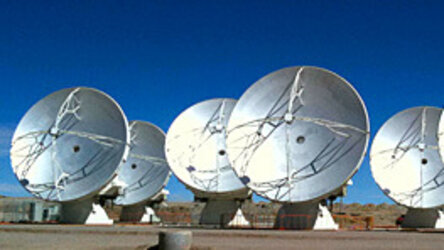Automatic identification system receiver and satellite payload comprising the same
| 551 - Abstract: |
| The European Space Agency is offering an innovative Automatic Identification System (AIS) receiver. Common AIS are usually used on ships and by Vessel Traffic Services (VTS) for identifying and locating vessels by electronically exchanging data. This innovative AIS system coverage reaches up to 200 nautical miles which is 5 times larger than that achievable with common terrestrial VHF communication systems. Such capability is high also for other types of terrestrial transmission systems. |
Description of the offer
The innovation offered by a major International Organisation is related to an innovative Automatic Identification System (AIS) receiver. The Automatic Identification System (AIS) is an automated tracking system usually used on ships and by Vessel Traffic Services (VTS) for identifying and locating vessels by electronically exchanging data with other nearby ships and VTS stations. AIS information supplements marine radar, which continues to be the primary method of collision avoidance for water transport nowadays.
The proposed technology would definitely enhance current limitations of AIS systems and the relevant performance. The original application of the new receiver was meant for a satellite telecommunication payload in which such receiver was included.
The main advantage of AIS communication system is that it provides identification and location information for example to ships and shore stations by exchanging different types of data including position, identification, course, speed and any other. The proposed AIS apparatus allows exchanging information anticipating and thus avoiding collisions in the sea through continuous traffic monitoring facilitating monitoring services for the coastal guards or rescue organisations. The reason why this type of AIS system is much better than common ones is that while typical radio frequency systems coverage is limited to about 40 nautical miles, the new satellite –based herein proposed can translate into a maximum range of about 200 nautical miles. Recently, it has become very important to detect and track ships that are located even at a great distance from the coast, such distances are much larger than those achievable with common terrestrial VHF communication systems. Such improvement in the management of ships that are really far away from the shores or isolated from other ships, will allow better handling of hazardous cargos, improved security and countering of illegal operations.
Innovations and advantages of the offer:
The advantage of such innovative AIS apparatus relies on a better modulation system and on a wider range of applicability, as a matter of fact the broadcast of data is performed in very little time slots (about 27 ms). Each time slot is defined on the basis of a common temporal reference which is given by the GPS. During such small timeslot, a message of 256 bits is transmitted at a rate of 9600 b/s using a Gaussian Minimum Shift Keying modulation.
All AIS emitters that are located nearby synchronize with each other in order to avoid emissions of more than one packet of information in the same time slot by different emitters. In this way Self Organised Time Division Multiplex Access (SOTDMA) regions are formed. Each of these regions is designed to cope with path delays not longer than 12 bits. This allows covering up to 200 nautical miles, which is 5 times higher than common ones.
Domain of Application:
Even though the natural application of such a high performing AIS system would be for maritime applications and for vessels detection, the potential of such a receiver is high also for other areas in which radio transmission systems or further arrangements for detecting or preventing errors in the information received can prove useful (also on terrestrial transportation systems).















 Germany
Germany
 Austria
Austria
 Belgium
Belgium
 Denmark
Denmark
 Spain
Spain
 Estonia
Estonia
 Finland
Finland
 France
France
 Greece
Greece
 Hungary
Hungary
 Ireland
Ireland
 Italy
Italy
 Luxembourg
Luxembourg
 Norway
Norway
 The Netherlands
The Netherlands
 Poland
Poland
 Portugal
Portugal
 Czechia
Czechia
 Romania
Romania
 United Kingdom
United Kingdom
 Slovenia
Slovenia
 Sweden
Sweden
 Switzerland
Switzerland



























